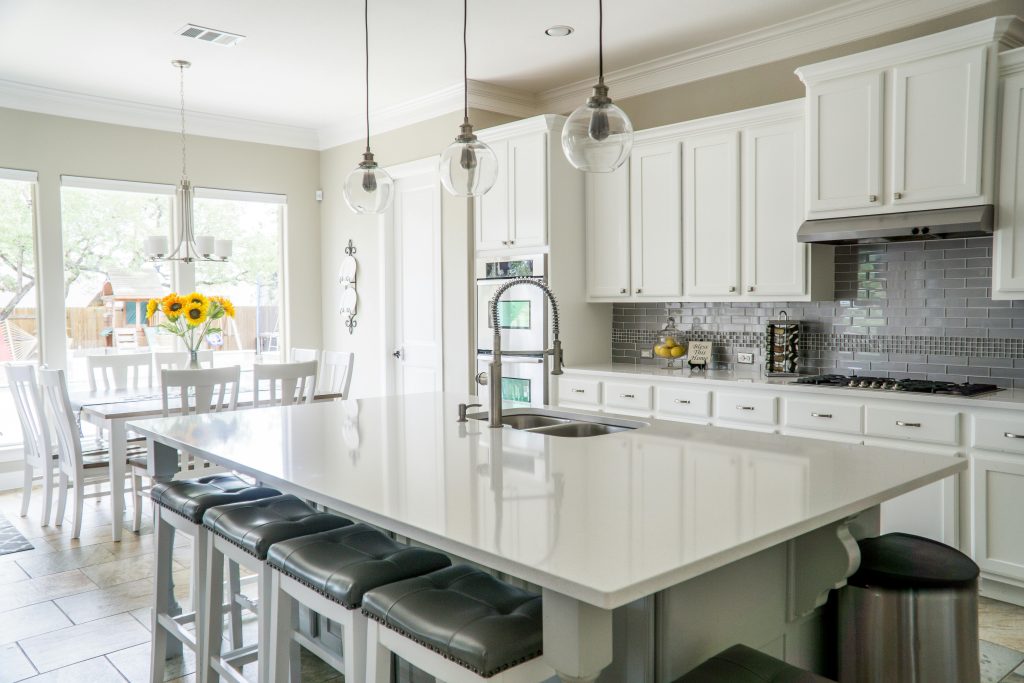How to Choose the Perfect Kitchen Cabinets for Your Home

Introduction
The kitchen is the heart of the home, and cabinets are its soul. Choosing the right cabinets can transform your space and enhance your culinary experience. Cabinets not only provide essential storage but also play a crucial role in defining the style and functionality of your kitchen. When selecting cabinets, consider factors such as style, storage needs, budget, and durability.
1. Kitchen Style
1.1. Identifying the Style
Understanding the most popular kitchen styles can guide your cabinet selection. Here are some key styles:
-
Modern: Characterized by clean lines, minimalism, and functionality. Cabinets often feature smooth surfaces and neutral or dark colors.
-
Rustic: Emphasizes warmth and comfort, often using untreated wood or aged finishes. Look for cabinets with natural textures and wrought iron hardware.
-
Classic: Known for elegance and symmetry, classic kitchens feature ornate details and high-quality wood finishes.
-
Industrial: Inspired by urban lofts, this style uses raw materials like metal and reclaimed wood, often with a rugged finish.
1.2. How Cabinets Complement the Style
Cabinets should harmonize with your kitchen's overall aesthetic. Consider the following tips when choosing colors and finishes:
-
Align with the kitchen's style to maintain aesthetic coherence.
-
Choose colors that complement existing elements like walls and countertops.
-
Test colors under different lighting conditions to see how they appear.
-
In smaller kitchens, lighter colors can create a sense of space, while darker tones add coziness.
-
Select finishes that match other materials in the kitchen, ensuring a cohesive look.
2. Storage Needs
2.1. Evaluating Space
Measuring your available space is crucial for effective cabinet selection. Here’s how to do it:
-
Use a tape measure to determine the length, height, and depth of the area for cabinets.
-
Measure from the floor to the ceiling and wall to wall, accounting for any protrusions.
-
Consider the height of upper cabinets, typically ranging from 30 to 42 inches.
-
Ensure there’s enough space for appliances and that cabinet doors can open freely.
2.2. Types of Cabinets and Storage Solutions
Maximizing storage is essential, especially in smaller kitchens. Consider these options:
-
Adjustable Shelves: Allow for flexibility in storage.
-
Deep Drawers: Ideal for pots and pans, providing easy access.
-
Vertical Storage Solutions: Utilize wall space for additional storage.
-
Custom Cabinets: Tailored solutions can optimize your kitchen layout.
3. Budget
3.1. Establishing a Price Range
Defining a realistic budget is key to your cabinet selection process. Here are some tips:
-
Research typical price ranges for different cabinet types:
-
Stock Cabinets: $100 - $300 per linear foot.
-
Semi-Custom Cabinets: $150 - $500 per linear foot.
-
Custom Cabinets: $500 - $1,200 per linear foot.
-
-
Compare prices based on materials and styles to find the best fit for your budget.
3.2. Cabinet Options by Budget
Different budgets allow for various cabinet options:
-
Prefabricated Cabinets: Cost-effective and readily available.
-
Custom Cabinets: Offer tailored solutions but at a higher price point.
-
Explore brands that cater to different budgets, ensuring quality and style.
4. Durability and Materials
4.1. Common Cabinet Materials
Understanding the materials used in cabinets can help you make informed choices:
-
Solid Wood: Durable and aesthetically pleasing but can be expensive.
-
MDF (Medium Density Fiberboard): Smooth finish ideal for painting, but less durable than solid wood.
-
Laminate: Affordable and easy to clean, but may not be as durable.
-
Metal: Offers a modern look and high durability, but can be costly.
4.2. Evaluating Quality
To ensure you choose high-quality cabinets, consider:
-
Checking for solid construction and sturdy hardware.
-
Looking for warranties that indicate manufacturer confidence.
-
Researching the manufacturer's reputation for quality and customer service.
5. Additional Tips for Selecting Cabinets
5.1. Current Trends
Stay updated on the latest trends in cabinet design:
-
Neutral Colors: Timeless and versatile, allowing for easy updates.
-
Open Shelving: Adds visual interest while keeping essentials accessible.
-
Sustainable Materials: Eco-friendly options are increasingly popular.
5.2. Consulting a Professional
Working with a designer can enhance your cabinet selection process:
-
Professionals bring expertise in optimizing space and style.
-
They can help you navigate material choices and budget constraints.
-
A designer can ensure that your cabinets integrate seamlessly with other kitchen elements.
Conclusion
Choosing the perfect kitchen cabinets is a rewarding process that can significantly impact your kitchen's functionality and aesthetic. By considering style, storage needs, budget, and durability, you can make informed decisions that reflect your personal taste and lifestyle. Remember, with the right information and guidance, you can create a kitchen that is both beautiful and practical.

